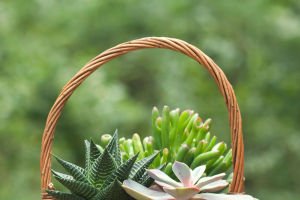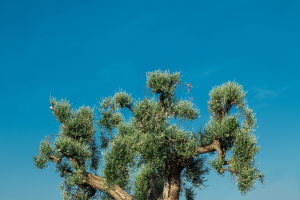Resilient Desert Trees
Desert trees are marvels of nature, having evolved to thrive in some of the most challenging climates on Earth.
These resilient species have adapted to extreme temperatures, scarce water, and nutrient-poor soil, providing shade, stabilizing soil, and serving as habitats for various desert wildlife.
Here, Let's explore some of the most notable types of desert trees, each with unique adaptations that enable it to withstand the demanding conditions of arid regions.
1. Mesquite Tree (Prosopis spp.)
Mesquite trees are iconic in North and South American deserts, particularly in the southwestern United States and Mexico. They are recognized for their deep-root systems that can extend over 150 feet underground to tap into deep water sources. These trees have compound leaves that reduce water loss by providing shade for their roots and surrounding soil.
The mesquite’s long, bean-like seed pods provide a high-protein food source for wildlife, and its wood, known for its rich flavor, is commonly used for smoking meats. Mesquites are also nitrogen-fixers, meaning they enrich the soil with nutrients, benefiting nearby plants in otherwise poor desert soils.
2. Palo Verde (Parkinsonia spp.)
Palo Verde, meaning “green stick” in Spanish, gets its name from its green bark, which can photosynthesize even when the tree sheds its leaves to conserve water. These trees are native to the Sonoran Desert in Arizona and Mexico and are easily identifiable by their yellow blooms and wispy leaves.
During prolonged dry periods, Palo Verde trees drop their tiny leaves to minimize water loss, relying on their photosynthetic bark to maintain energy production. This adaptation enables them to survive intense droughts while still growing in full sun. Their flowers also attract pollinators, making them essential in supporting desert ecosystems.
3. Joshua Tree (Yucca brevifolia)
A symbol of the Mojave Desert, the Joshua tree is a member of the yucca family rather than a true tree. This iconic plant can grow up to 40 feet tall and is known for its twisting branches and spiky, dagger-shaped leaves. Its thick, fibrous trunk stores water, while its extensive root system captures moisture quickly when it rains.
Joshua trees have a unique mutualistic relationship with the yucca moth, which pollinates the flowers while laying eggs in them. This ensures the survival of both species. These trees are extremely slow-growing, with some specimens reaching ages of several hundred years.
4. Acacia Tree (Acacia spp.)
Acacia trees are common across the deserts of Africa, Australia, and parts of North and South America. Known for their umbrella-like canopies, they provide vital shade for desert animals and reduce soil erosion. The leaves of acacia trees are small and feathery, minimizing water loss and withstanding high temperatures.
Some acacia species have developed symbiotic relationships with ants, which protect the trees from herbivores in exchange for food and shelter provided by the acacia’s nectar-filled nodules. This defense mechanism helps acacia trees survive in harsh desert environments where resources are scarce.
5. Ironwood (Olneya tesota)
Ironwood trees are native to the Sonoran Desert and can live up to 1,500 years. Their name comes from their extremely dense wood, which is among the hardest and heaviest of any tree. Ironwood trees are crucial to the desert ecosystem, often acting as “nurse plants” by providing shade and shelter for other plant species, which grow in their protective microhabitat.
Ironwoods bloom with beautiful purple flowers in spring, and their seeds and flowers are a vital food source for desert wildlife. The tree’s dense canopy and deep roots help it conserve water, making it well-suited to hot, arid conditions.
6. Date Palm (Phoenix dactylifera)
The date palm is a familiar sight in Middle Eastern and North African deserts. This ancient tree has been cultivated for over 6,000 years for its nutritious fruit. Date palms can grow up to 100 feet tall and are drought-tolerant, thanks to their extensive root systems that access deep groundwater.
Date palms are valuable for desert agriculture, providing not only food but also shade for other crops in oases. Their fan-like leaves are coated with a waxy substance that minimizes water loss, and they are often planted in clusters to create a humid microenvironment.
7. Quiver Tree (Aloe dichotoma)
Native to the deserts of southern Africa, the quiver tree is actually a large species of aloe. It gets its name from indigenous people who used its hollowed-out branches to make quivers for arrows. Quiver trees can reach up to 30 feet tall and have thick, succulent leaves that store water.
These trees have adapted to high temperatures and minimal rainfall by developing a white, powdery coating on their leaves, which helps to reflect sunlight and reduce water loss. The quiver tree’s unusual appearance and adaptations make it a fascinating example of desert plant resilience.
Desert trees like the mesquite, palo verde, and Joshua tree highlight the incredible diversity and adaptability of life in arid regions. Their unique features—such as deep roots, photosynthetic bark, and symbiotic relationships with animals—allow them to thrive where few other plants can survive. By supporting soil health, providing shade, and offering food sources, these trees play vital roles in maintaining desert ecosystems and supporting the plants and animals that depend on them.
Whether providing habitat, food, or even serving cultural and practical purposes, desert trees are an integral part of the arid landscape and are a testament to the resilience of nature.


